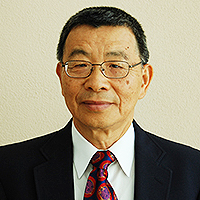Nano-formulations for Ophthalmic Treatments
Published on: 29th December, 2017
OCLC Number/Unique Identifier: 7325061328
Ocular disorders encompass a multitude of diseases that are unique in their cause, therapy and degree of severity. Due to distinctive morphology of the eye, efficient ocular drug delivery has proven to be a difficult task. Current treatments of ophthalmological diseases include the usage of both intrusive as well as nonintrusive methods such as injections, eye drops, ointments, gels etc. The current state of the art drug delivery methods are associated with low bioavailability and therefore nanotechnology based drug delivery approached are evolving as for improving the therapeutic index of currently used drugs against variety of ocular disorders. This review highlights the recent developments in nano-formulations for ophthalmic treatment and also offers discussions towards the future prospectus of nano-formulations in the mainstream of ophthalmic diseases.
Role of nanotechnology in diagnosing and treating COVID-19 during the Pandemic
Published on: 27th May, 2020
The coronavirus disease 2019 (COVID-19) pandemic, caused by the severe acute respiratory syndrome coronavirus 2 (SARS-CoV-2), began in December 2019 in Wuhan, China. To date, the virus has infected roughly 5,000,000 people and caused approximately 345,000 deaths worldwide, and these numbers are increasing rapidly. Because of the rapid spread and the rising disease burden, several antiviral drugs and immunomodulators are in clinical trials, but no drugs or vaccines have yet been approved against this deadly pandemic. At present, computed tomography scanning and reverse transcription (RT)-PCR are used to diagnose COVID-19, and nanotechnology is being used to develop drugs against COVID-19. Nanotechnology also plays a role in diagnosing COVID-19. In this article, we discuss the role of nanotechnology in diagnosing and potentially treating COVID-19.
Nanotechnology to improve the biofouling and corrosion performance of marine paints: from lab experiments to real tests in sea
Published on: 12th July, 2019
OCLC Number/Unique Identifier: 8200142194
Nanocontainers of the type CuO, ZnO and CeMo were developed in the present work and incorporated into commercial paints. The nanocontainers were filled with bromosphaerol (CuO and ZnO), SeaNineTM 211 (CuO and ZnO), and 8Hydroxyquinoline (CeMo). The new resulting paints were tested in the lab and in the sea via painting a fraction of two ships. The outcome of this work is encouraging demonstrating that the new nanotechnology-based paints yield to superior commercial paints that may present a major milestone in the new generation of marine paints
Nanotherapeutic agent for cancer: Miracle or catastrophe
Published on: 28th June, 2019
OCLC Number/Unique Identifier: 8172439175
Nanotechnology is a smart technology in the field of biomedical engineering used for the diagnosis and treatment of diseases. Nanodrugs provide better encapsulation of drug and efficiency at low dosage to kill the targeted tissue/cells. However, the chances of chronic toxicity and high cost of treatment limits its applicability [1]. To overcome these problems still, the experts of the scientific community have been working on it, to design the best one and cost-effective treatment for the human welfare.
Difference between conventional and modern methods for examination of fingerprints
Published on: 10th August, 2021
OCLC Number/Unique Identifier: 9206115286
The impression of frictional ridges of the finger is known as fingerprints. Owing to this uniqueness, the fingerprints have long been used to identify a person since Ancient times. In any crime scene the presence of fingerprint makes the identification of the Culprit very easy. The fingerprints can also easily be embedded on any item such as paper, Clothing and body of the victim. To utilize this uniqueness of fingerprints forensic experts devised many techniques to obtain a clear fingerprint. These come under two categories i.e. Conventional and modern methods.
The conventional methods are although important but there are limitations of them. Just take the example of powder method. Powder method require different powders for different Surfaces and colors, but modern method like quantum dots method can easily detect Fingerprints on all surfaces regardless of their color giving great resolution in seconds. Other methods like physical developer method is very time consuming and expensive, carbon Black method creates mess and does not work on porous surface, iodine fuming and Naphthaloflavin does have an advantage that it can bring up prints on skin also but it does not Work on metallic surfaces. VMD also fails on heavy plastic polymers and body oils. But some modern methods like nanotechnology can obtain high resolution prints old and dried prints also within 3 minutes. Laser technology is very fast, accurate and can be used for Fingerprints up toten years old also on any surface without any mess. Multimetal deposition Method can even be used to identify smokers and drug addicts and can be used Porous, non-porous and wet surfaces.
Synthesis and characterization of CdS/CeO2 Nanocomposite with improved visible-light photocatalytic degradation of methyl orange dye
Published on: 20th June, 2022
OCLC Number/Unique Identifier: 9554643032
Different types of photocatalysts in single and binary systems in different molar ratios were synthesized by the co-precipitation method. Crystal structure, surface area, morphology, bandgap energy, functional groups, and optical properties of the as-synthesized photocatalysts were characterized by using XRD, BET, SEM-EDX, UV/Vis, FTIR, and PL instruments, respectively. Photocatalytic activities of the single and binary composite were evaluated by using an aqueous solution of model pollutant MeO. Photocatalytic activities of binary CdS/CeO2 (1:1) nanocomposite were found to be higher than those of single counterparts. The degradation efficiencies of the binary system were found to be 53.73%. The reusability of the binary photocatalyst was tested and only about 33% decrement was observed after four successive runs. The degradation of MeO dye follows the pseudo-first-order kinetics for the entire as-synthesized nanocomposite. The results also suggest that in the CdS/CeO2 (1:1) composite the photoinduced electrons and holes can be effectively separated.
Bio-inspired fabrication of zinc oxide nanoparticles: Insight into biomedical applications
Published on: 11th August, 2022
Nanotechnology is starting the characterization, fabrication, and possible applications of numerous materials at the Nano-scale. Over the last few eras, nanomaterials provide a platform for researchers from diverse arenas due to the high surface-to-volume ratio and other novels, and new significant belongings. Zinc oxide nanoparticles are receiving diverse biomedical applications because of their distinctive antimicrobial, antioxidant, anticancer, antifungal, antileishmanial, anti-larvicidal, wound healing, anticholinergic, and anti-diabetic properties. Different physical and chemical approaches have been used to synthesize zinc oxide nanoparticles, but these methods cause ecotoxicity and are time-consuming and costly. Therefore, there is a need for more eco-friendly, cost-effective, and safe methods. Such biogenic Zinc oxide nanoparticles offer more advantages over other physiochemically synthesized methods. In this review, we have summarized the recent literature for the understanding of the green synthesis of Zinc oxide nanoparticles, their characterization, and their various biomedical applications.
An overview of the developments of nanotechnology and heterogeneous photocatalysis in the presence of metal nanoparticles
Published on: 20th September, 2022
OCLC Number/Unique Identifier: 9625606691
In general, nanotechnology can be understood as a technology of design, fabrication and applications of nanostructures and nanomaterials, as well as a fundamental understanding of the physical properties and phenomena of nanomaterials and nanostructures. In recent years the development of industries like textile, leather, paint, food, plastics, and cosmetics is enlarged and these industries are connected with the discarding of a vast number of organic pollutants which are harmful to microbes, aquatic systems, and human health by influencing the different parameters. So the fabrication of those nanomaterials (coupled or doped) to form heterojunctions provides an effective way to better harvest solar energy and facilitate charge separation and transfer, thus enhancing the photocatalytic activity and stability. We expect this review to provide a guideline for readers to gain a clear picture of the fabrication and application of different types of heterostructured photocatalysts. In this review, starting from the photocatalytic reaction mechanism and the preparation of the photocatalyst, we review the classification of current photocatalysts, preparation methods, a factor that affects photocatalytic reaction, characterization of photocatalysts, and the methods for improving photocatalytic performance. This review also aims to provide basic and comprehensive information on the industrialization of photocatalysis technology.
Photocatalytic degradation of organic pollutants in the presence of selected transition metal nanoparticles: review
Published on: 29th September, 2022
OCLC Number/Unique Identifier: 9639245949
Photocatalysis has attracted a lot of attention in recent years due to its potential in solving energy and environmental issues. Efficient light absorption and charge separation are two of the key factors for the exploration of high-performance photocatalytic systems, which are generally difficult to obtain from a single photocatalyst. The combination of various materials to form heterojunctions provides an effective way to better harvest solar energy and facilitate charge separation and transfer, thus enhancing photocatalytic activity and stability. This review concisely summarizes the recent development of visible light responsive heterojunctions, including the preparation and performance of semiconductor/semiconductor junctions and semiconductor/metal junctions and their mechanism for enhancing light harvesting and charge separation/transfer. In this regard, this review presents some unitary, binary and ternary CeO2 photocatalysts used for the degradation of organic pollutants. We expect this review to provide the type of guidelines for readers to gain a clear picture of nanotechnology and the fabrication and application of different types of heterostructured photocatalysts.
Current and emerging trends in oro-dental healthcare and cranio-maxillo-facial surgery
Published on: 14th April, 2023
Dentistry is an ever-evolving field that has seen significant advances in recent years. This article sheds light on some of the current and emerging trends in oral health care, including digital dentistry, regenerative medicine, and the use of lasers. For example, digital dentistry involves the use of computer-aided design and manufacturing technology, which enables more accurate and efficient production of dental devices. On the other hand, regenerative medicine and nanoDentistry can be considered promising area that combines the use of stem cells, growth factors, biomaterials, and nanotechnology to regenerate damaged tissue and improve treatment outcomes. Lasers are increasingly being used in dentistry for a range of applications, including the treatment of gum disease and teeth whitening. Other developing technologies such as 3D printing and artificial intelligence are also being increasingly incorporated into dentistry, providing improved treatment options for our patients. Last yet definitely would/will not least, controlled drug delivery systems are being developed to deliver drugs to specific target sites in a localized and sustained manner, reducing the risk of adverse effects. Currently, these emerging trends are transforming the landscape of odontology and beyond. Hence, in this mini-Review, we explore such trends in oro-dental and cranio-maxillo-facial indications to highlight the potential benefits, advancements, and opportunities of applications for improved patient care.
















